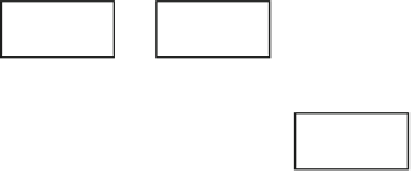Geography Reference
In-Depth Information
user
response
user
dialog act
Language
Understanding
Knowledge
base
Spatial
Data
system
dialog state
User
GUI
Dialog
management
Route
generation
Language
generation
system
response
system
dialog act
Fig. 6.2
Syntactic Chunking
Postprocessing Chunks
Context-Specific
Route Directions
Extracting
Instructions
Calculating
Route
Optimization
Fig. 6.3
Overview of G
UARD
, the generation process for route directions in the kiosk system
route to a destination with the instructions adapted to environmental characteristics.
The generated route directions make heavy use of landmark references to structure
First, for every decision point every possible instruction is generated (e.g., 'turn
left', 'turn left after the glass door', 'turn left at the posters' may all be possible
descriptions for a left turn at a corridor intersection where you have just passed a
glass door and there are posters attached to the wall). This results in a set of possible
instructions for each decision point. Clearly, given the principles of relevance, the
system cannot use all of these possible instructions, but has to decide on one of
them. As an intermediate step for getting to this decision, G
UARD
performs
spatial
CORAL system in that spatial chunking combines several consecutive instructions
into a single one (e.g., 'turn left at the third intersection' instead of 'go straight', 'go
straight', 'turn left'). The resulting spatial chunks are possible clause structures in
the CORAL terminology.
But again, G
UARD
produces every possible chunk that is deemed valid. Thus,
next the system needs to decide on the 'best' description for the route, i.e., the
optimal sequence of chunks. This is an optimization process. The resulting chunk































Search WWH ::

Custom Search